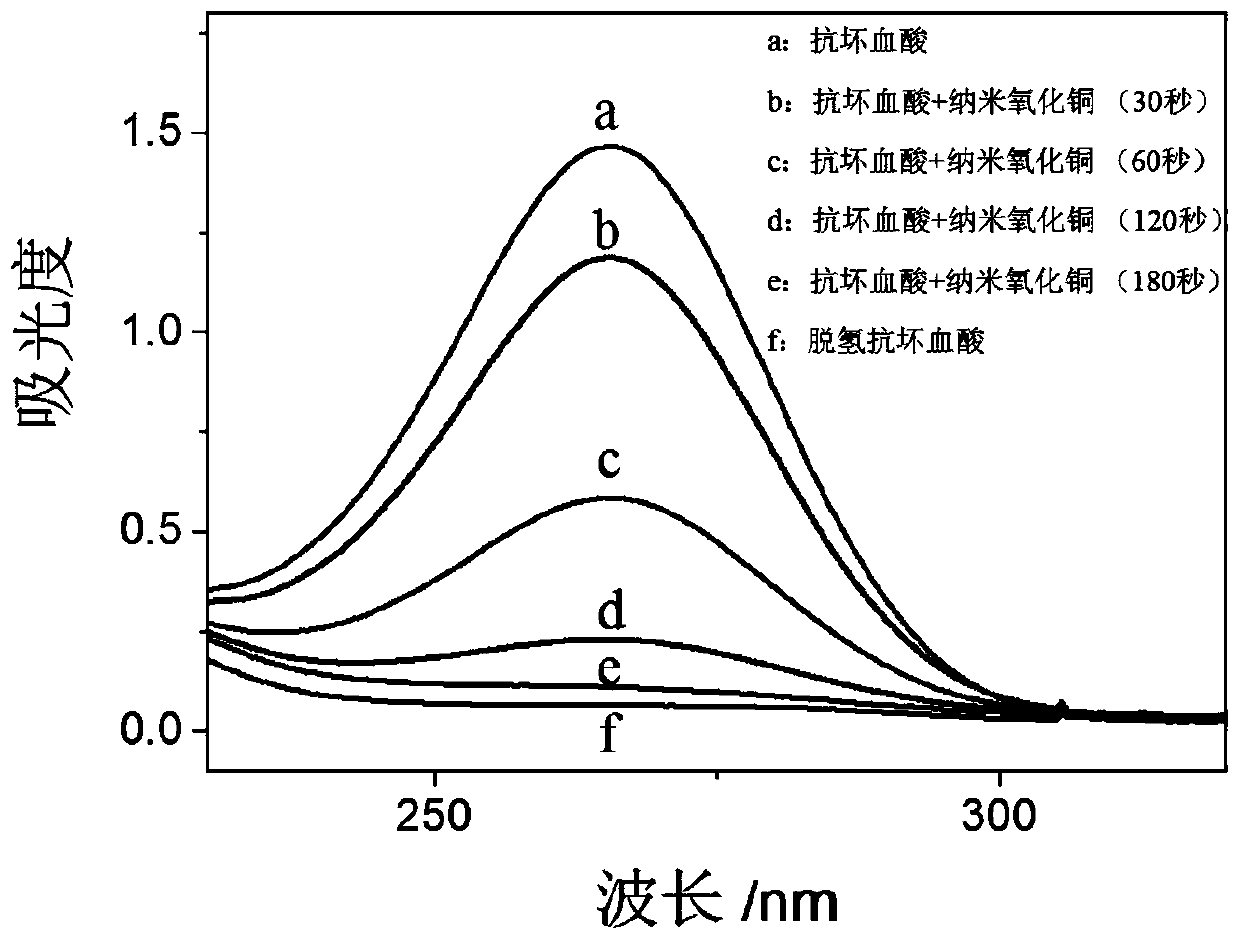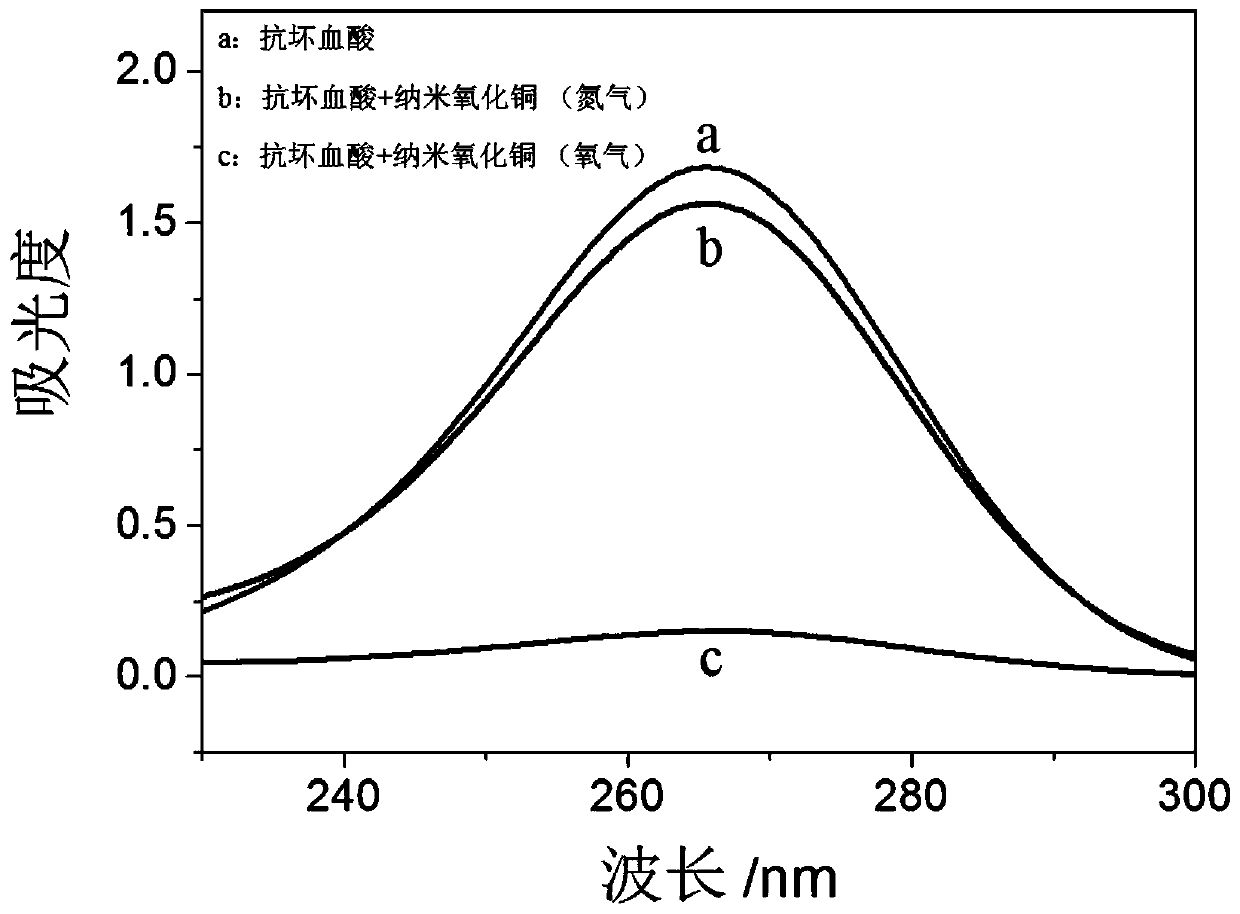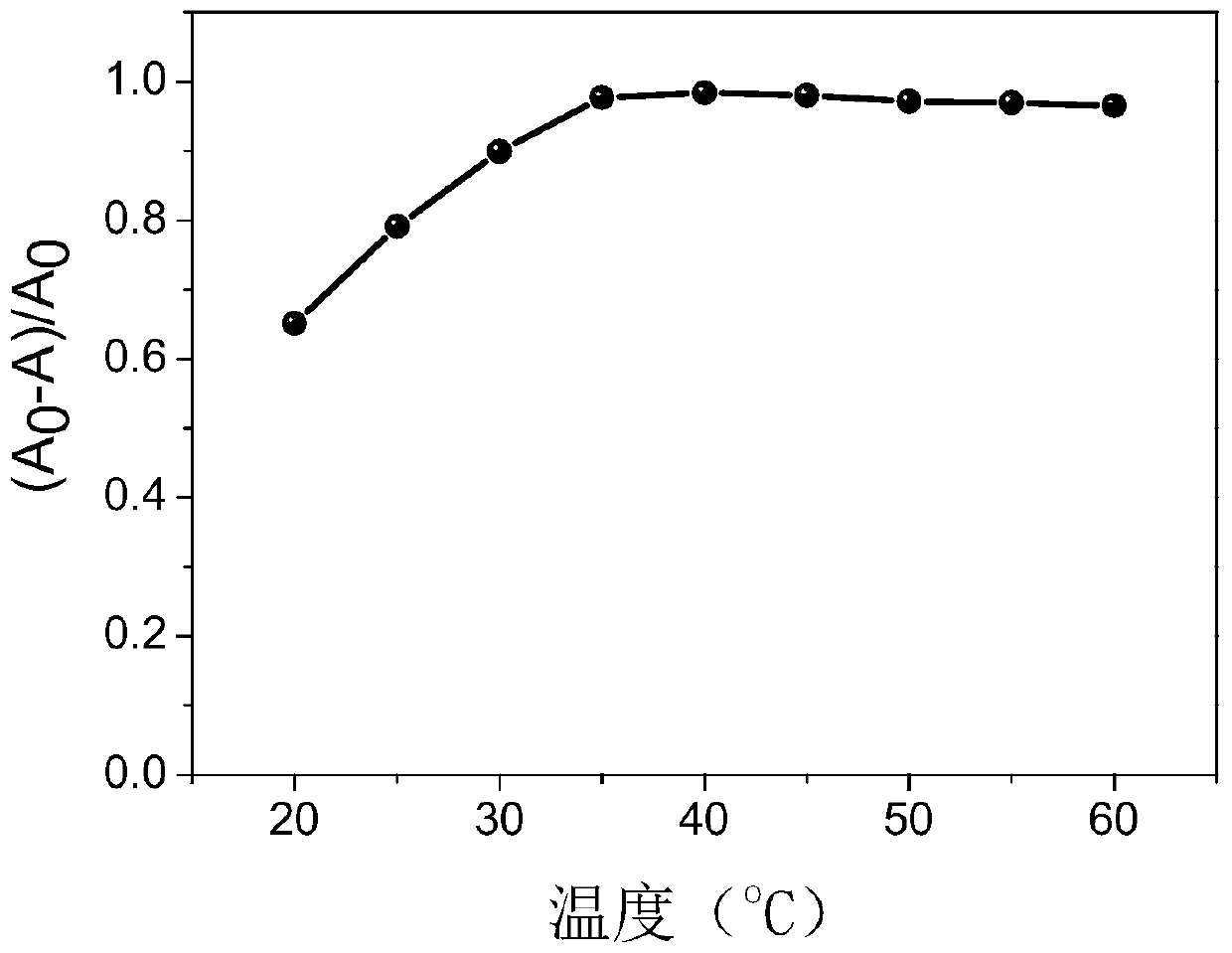Nano copper oxide with activity of ascorbic acid oxidization mimic enzyme
A technology of nano-copper oxide and ascorbic acid, which is applied in the field of nanotechnology and bionics, and can solve problems such as harsh operating conditions, application limitations, and inactivation of ascorbic acid oxidase
- Summary
- Abstract
- Description
- Claims
- Application Information
AI Technical Summary
Problems solved by technology
Method used
Image
Examples
example 1
[0041] The specific preparation steps of nano-copper oxide are as follows: (1) Take 150 ml of 0.02 mol / L copper acetate solution and 0.5 ml of glacial acetic acid into a three-necked flask equipped with a condenser, stir and heat to boiling; (2) Quickly add 0.04 g / ml sodium hydroxide solution 10 ml, continue to stir for 5 minutes after the addition, to obtain a brown copper oxide precipitate; (3) centrifuge the black copper oxide precipitate obtained from the reaction, wash with absolute ethanol three times, and dry under reduced pressure, that is A nano-copper oxide powder with a diameter of 6 nm was obtained.
example 2
[0043] In the presence of oxygen, the ascorbic acid oxidation mimetic enzyme activity of nano-copper oxide was investigated. Add 50 µL of nano-copper oxide (40 mg / L) prepared in Example 1 and 0.5 mL of ascorbic acid (1 mM) to 3.45 mL of phosphate buffer (pH 7.0, 200 mM) at a water bath temperature of 45 °C, and react After 6 minutes, measure the ultraviolet-visible absorption spectrum and the absorbance at a wavelength of 265 nm with an ultraviolet spectrophotometer. Such as figure 1 As shown, after adding nano-copper oxide to the reaction, as the reaction time prolongs, the absorbance of the system at a wavelength of 265 nm decreases significantly, indicating that ascorbic acid in the system is obviously consumed.
example 3
[0045] The ascorbic acid oxidation mimetic enzyme activity of nano-copper oxide was investigated after 20 minutes of nitrogen gas and in the presence of oxygen. Add 50 µL of nano-copper oxide (40 mg / L) prepared in Example 1 and 0.5 mL of ascorbic acid (1 mM) to 3.45 mL of phosphate buffer (pH 7.0, 200 mM) at a water bath temperature of 45 °C, After reacting for 6 minutes, the ultraviolet-visible absorption spectrum and the absorbance at a wavelength of 265 nm were measured with an ultraviolet spectrophotometer. Such as figure 2 As shown, the absorbance of the system at a wavelength of 265 nm will decrease significantly only in the presence of oxygen and nano-copper oxide at the same time, indicating that nano-copper oxide catalyzes the redox process of ascorbic acid.
PUM
| Property | Measurement | Unit |
|---|---|---|
| fluorescence | aaaaa | aaaaa |
Abstract
Description
Claims
Application Information
 Login to View More
Login to View More - R&D
- Intellectual Property
- Life Sciences
- Materials
- Tech Scout
- Unparalleled Data Quality
- Higher Quality Content
- 60% Fewer Hallucinations
Browse by: Latest US Patents, China's latest patents, Technical Efficacy Thesaurus, Application Domain, Technology Topic, Popular Technical Reports.
© 2025 PatSnap. All rights reserved.Legal|Privacy policy|Modern Slavery Act Transparency Statement|Sitemap|About US| Contact US: help@patsnap.com



